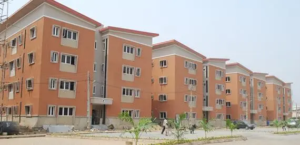The Rise of Co-living Spaces in Urban Areas: A Modern Solution to Housing and Community Building
In recent years, co-living spaces have emerged as a popular and innovative housing trend, reshaping the way people live, work, and interact in urban areas. Co-living is a modern housing concept that emphasizes shared living spaces, fostering a sense of community, and promoting a more sustainable lifestyle. In this article, we will explore the rise of co-living spaces in urban areas and the factors contributing to their growing popularity.
Addressing Housing Affordability
One of the primary drivers behind the rise of co-living spaces is the increasing challenge of housing affordability in urban centers. Co-living offers an attractive alternative for individuals who find it difficult to afford traditional housing options in expensive cities.
Flexibility and Convenience
Co-living spaces provide flexible lease terms, making them ideal for young professionals, digital nomads, and students who may not want to commit to long-term leases. These spaces are fully furnished, eliminating the need to purchase furniture, making moving in hassle-free.
Enhanced Social Connectivity
Urban living can sometimes feel isolating, but co-living spaces emphasize community-building and social interaction. Residents have ample opportunities to connect, collaborate, and network with like-minded individuals, fostering a strong sense of belonging.
Shared Amenities and Services
Co-living spaces often come with a range of shared amenities and services, such as communal kitchens, coworking spaces, fitness centers, and recreational areas. These shared facilities enhance the overall living experience and encourage a balanced lifestyle.
Sustainable Living
Many co-living spaces prioritize sustainability and eco-friendliness. From energy-efficient designs to waste reduction initiatives, these spaces appeal to environmentally conscious individuals seeking more sustainable living options.
Embracing Diversity and Inclusion
Co-living spaces attract a diverse group of residents from different cultural backgrounds and professions. This diversity fosters a multicultural environment, encouraging learning, tolerance, and mutual respect among residents.
Professional Networking Opportunities
For entrepreneurs and professionals, co-living spaces present valuable networking opportunities. Residents often come from various industries, providing an organic environment for collaboration and business connections.
Access to Urban Hubs
Co-living spaces are strategically located in urban hubs, providing easy access to public transportation, entertainment venues, restaurants, and other city amenities. This location advantage enhances residents’ urban lifestyle experience.
Property Utilization and Density
Co-living spaces optimize property utilization and density, making efficient use of space in densely populated urban areas. This can contribute to more sustainable urban development and reduce urban sprawl.
Resident Well-being
Co-living spaces often prioritize the well-being of their residents, providing social activities, wellness programs, and mental health support to create a holistic living environment.
The rise of co-living spaces in urban areas represents a significant shift in how people perceive and experience housing. These innovative living arrangements offer a compelling solution to the challenges of housing affordability, social isolation, and sustainable living. Co-living spaces not only provide flexible and convenient housing options but also foster a sense of community and connection among residents. As more individuals seek ways to live in vibrant urban centers, co-living spaces will continue to gain popularity as a modern and enriching way to call a city home. As this trend evolves, it will be exciting to witness how co-living spaces continue to shape urban living experiences and contribute to the growth of vibrant and inclusive communities in urban areas worldwide.
- How to Avoid Legal Complications When Investing in High-Risk Properties in Nigeriaby Chaman Properties
- How Long Does A Title Search Take In Nigeriaby lawyers center
- Comprehensive Guide To All You Need To Buy For Your Building Constructions, From Start To Finishing In Nigeriaby Chaman Properties
 The Role of Real Estate Investment in Economic Development in Nigeriaby Chaman Properties
The Role of Real Estate Investment in Economic Development in Nigeriaby Chaman Properties

